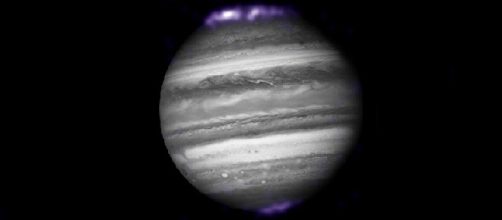Eight times brighter than normal
Charged particles (solar wind) are producing X-ray auroras at Jupiter´s poles. The shiny lights are eight times more brilliant than normal and several hundred times more energetic than the auroras seen on earth. This event, which was observed using NASA´s Chandra X-ray Observatory, is one of the first attempts made at observing Jupiter´s auroras coincident with an interplanetary coronalmass ejection (ICME).
Highly charged particles
The sun is constantly ejecting high energetic particles in all directions. The density, temperature and speed of this particles varies and may scape the sun´s gravity when they’re highly energetic.
This occurs during coronal mass ejections (CMEs), which is when the solar wind may reach the planets and other cosmic bodies.
What are auroras?
Auroras are natural displays of lights that are seen at high altitudes on planetary bodies. On earth, they are produced at the poles of the planet. They occur when the solar wind interacts with charged particles in the magnetosphere, disturbing them and precipitating both the solar wind and magnetospheric plasma towards the upper part of the atmosphere; once there, these particles interact with the atoms and molecules ionizing or exciting them; thus, creating displays of colorful light.
Jupiter´s auroras
Jupiter has a magnetic field that is more intense than the one on earth.
The auroras on Jupiter are produced by the solar wind and become more intense during intense CMEs. Coronal ejections send Jupiter’s magnetic field boundary significantly inward. The auroras on Jupiter are thought to be caused by sulfur and oxygen ions interacting with the solar wind at the edges of its magnetic field.
A recent publication at the Journal of geophysical research on 22 March 2016 states that interaction of ICMEs at the boundary of Jupiter´s magnetosphere originates X-ray auroras on the planet.
Scientists reported that during 11 hours of observation in 2011 in coincidence with a predicted ICME. They discovered that a hot spot of X rays that pulsed with a periodicity of 45 minutes before the arrival of the ICME incremented in periodicity to 26 minutes after the arrival.
They think that by studying aurora variations, they may be able to know more about Jupiter´s magnetic field and how the sun´s effects act upon it. A good understanding of these interaction is important for understanding other processes ocurring on Jupiter´s surface and in space.

